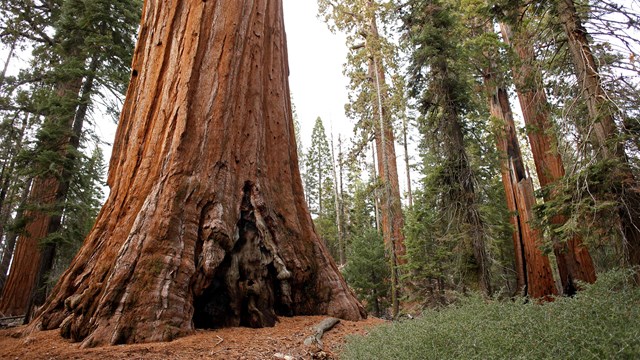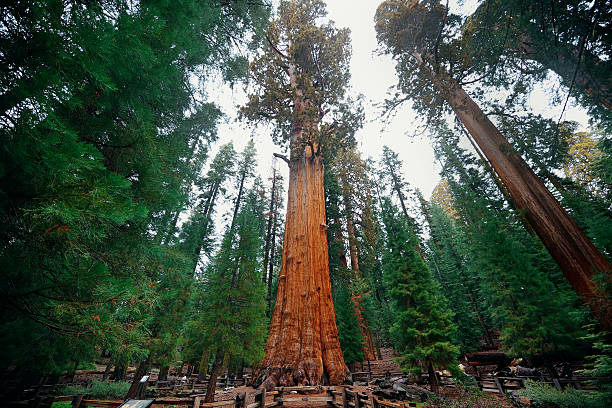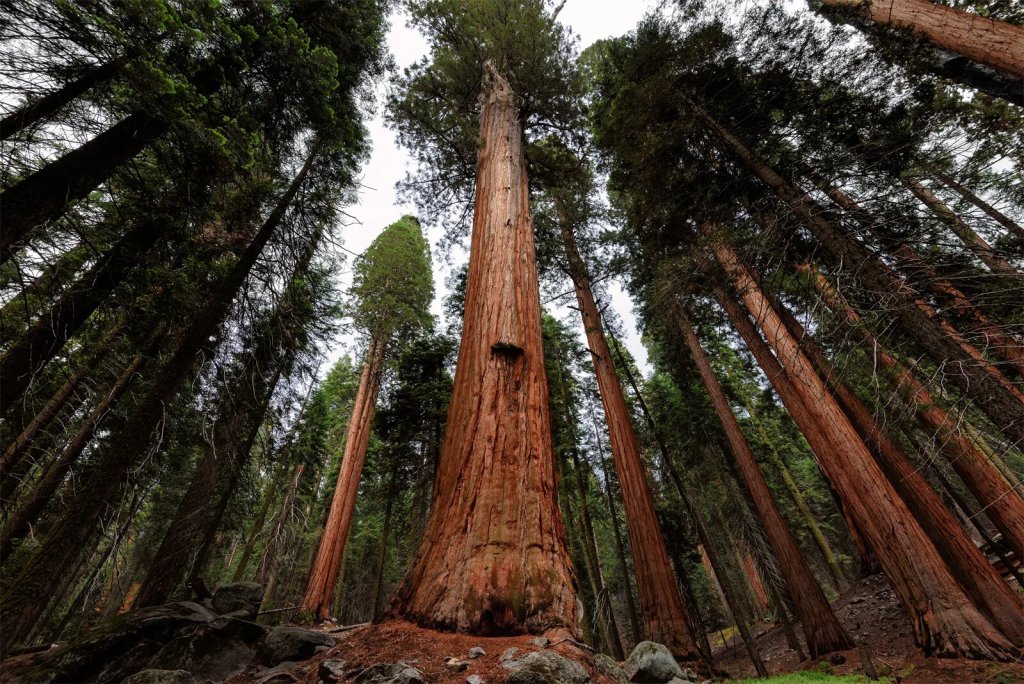America has a lot of big, strong trees. But one tree stands out as the strongest of them all. This tree is like a giant in the forest. It’s very tall and strong. And it’s not just tall, it’s really thick too. Some of these trees are so big that you could fit a car through their trunk.
We will come across this special and strongest in America. But there is a common question: what makes this tree even more amazing and special? People come from all over to see these incredible trees. They’re like living giants in the American forests.
So, look at these tips to learn about this curious tree.
The General Sherman Tree

The General Sherman Tree is really strong. This is the strongest tree in all of America. This tree lives in a place called Sequoia National Park, and it’s very big. Just think about a huge tree that you would need more than 20 people holding hands to make a circle around it.
The bark of the General Sherman Tree is soft and can even stop fires. It’s been here for a very long time, much longer than most of us. People from everywhere come to see this gigantic tree. This is similar to a natural wonder. Just keep in mind that it’s not about looking fancy.
It’s about being very strong and really impressive. This tree is a true marvel of nature, and it’s worth a visit if you get the chance.
The Giant Sequoia

1. Size and Height
The Giant Sequoia is the king of trees. It’s super tall, reaching up to 300 feet, which is really high. The trunk, like the tree’s body, can be more than 30 feet wide, which is huge. This makes it one of the biggest living things on our planet.
These big trees are very impressive and make people look up in awe. They are giants in the forest, standing really tall and strong. People like to visit these huge trees to see their amazing size.
These trees are unique and special because of their enormous height and wide trunks. When you walk among them, you feel really small.
2. Immense Girth and Weight
The big size of a Giant Sequoia tree shows how strong and old it can be. These trees have thick bark that can stop fires. They are very heavy, more than 4.5 million pounds, which keeps them strongly rooted to the ground. This helps them stay alive for a very long time, even when nature is tough on them.
These trees are like living legends because they can survive for a really long time. They show us the power of nature and how amazing it can be.
The Resilience of Giant Sequoias

1. Adaptability
Many trees struggle when things get tough, but not the Giant Sequoia. These huge trees live in the Sierra Nevada mountains in California. They’ve learned how to survive even when the weather is really cold or hot, and the soil doesn’t have much food for them.
It’s amazing how they can grow in such hard places. That’s why they’re called “Giant Sequoias.” They’re strong and can handle all kinds of challenges.
2. Fire Resistance
The Giant Sequoia is a very special tree. It can handle fires really well. Some people might think fires are bad for trees, but not these. They have tough bark that acts like a strong shield against fire. This helps them not only stay alive during fires but also do even better afterward.
This thick bark is like their armor, protecting them from the hottest flames. So, when a big fire comes, the Giant Sequoias don’t get hurt too much. In fact, they like it, and they grow even stronger after the fire goes away.
It’s amazing how they’ve learned to deal with something so hot and dangerous. These trees are real survivors, and that’s pretty cool.
Conservation Efforts and Future Prospects

1. Challenges Faced
In recent years, the storied Giant Sequoias have faced escalating challenges, from habitat loss to climate change and disease. Yet, conservationists and researchers are doubling down on efforts to safeguard these titans for future generations, as documented in a visual encyclopedia of tree species.
Such comprehensive resources underscore the critical need for conservation, spotlighting the Giant Sequoias’ plight and the multifaceted strategies to ensure survival. Emphasizing the collective responsibility to protect our natural heritage, these endeavors highlight the importance of each species in the tapestry of our environment.
2. Conservation Initiatives
Many people are working hard to keep Giant Sequoia trees safe. They do different things to help them. Some things include controlled fires, fixing the places where they live, and making special areas where they can stay safe.
They also use really good science to learn more about these big trees. This helps them ensure the trees will be here for a long time. So, with all these efforts, they are doing a great job to protect these amazing trees for the future.
Joshua Tree

Joshua Trees are special trees found in the hot and dry southwestern United States. They’re unique because they have twisty branches and pointy leaves, like something from a storybook. These trees are strong and can live in places with very little water.
People visit Joshua Tree because it is a fun outdoor playground. You can go for walks and see cool rocks. At night, the sky has lots of bright stars, and it’s awesome to look at them.
Joshua Trees don’t look like regular trees, but they’re cool and tough! When you go there, you can see rocks and gaze at stars in the night sky. It’s a fantastic place to visit.
Conclusion
When it comes to strong trees in America, the giant sequoia trees take the crown. These trees are like giants of the forest. They’re incredibly big and strong. Think of a tree so big that it can reach up to 300 feet tall and has a trunk as wide as a small house! That’s the giant sequoia.
These trees have been around for thousands of years, so they’ve seen a lot of history. They can endure harsh weather and keep on growing. People also love to visit these giant sequoias because they are real natural giants.
So, keep in mind. They are a living testament to the power and beauty of nature.

